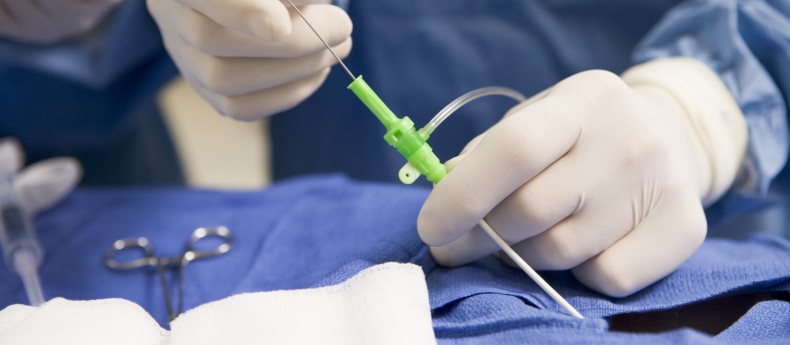
Interventional Medicine: What Will They Think of Next?
Interventional Radiology developed rapidly in the early 1980s as a merged discipline combining elements of medical imaging and clinical treatment. China’s Ministry of Health (MOH) issued a document on April 25, 1990, that coined the term “interventional medicine” to describe the combined disciplines of Radiology, Internal Medicine and Surgery. Before this time, few people could imagine these disciplines coming together.
As Beijing United Family Hospital starts up our Catheterization Lab to provide a range of interventional medical services for our patients, we should take a step back and marvel at the wonder of this medical technology. Most people are unfamiliar with what can be done in a Cath Lab. A Cath Lab is made up of interventional medical imaging equipment (Digital Subtraction Angiography, ultrasound, etc.), needle, catheter, guide wire, and other interventional devices.
Treatment Overview
Treatment generally happens this way. The necessary drugs or medical devices are introduced to the patient through the catheter and guide wire. For example, embolic material, thrombolytic drugs, sample collectors, stents to relieve obstructed arteries and veins, balloons and other devices can be introduced for therapeutic purposes. Imaging equipment – composed of tiny fiber-optic cables, cameras, lights, robotic control mechanisms…essentially, an entire video crew – can also be introduced via very small incisions made in the skin (a few millimeters). To date, this is the least traumatic form of treatment for internal conditions that we know.
Interventional medicine is arguably the important development of modern medicine. In recent years, medical technological developers have focused most of their efforts on racing with traditional clinical treatments to find new ways for resolving clinical challenges. In this race, new treatments have been developed for persistent or seemingly incurable conditions. Cases that traditional surgeons have deemed too complicated for operation have been treated by simple, safe and effective interventional methods resulting in fewer complications, less pain and quicker recovery. What used to take educated guesses and large incisions to open up the body cavity now only requires a few small cuts and almost no recovery time. In addition to treating patients, interventional medicine also helps with diagnosis, therapy and general improvement in quality of life. Interventional technology has made modern day medical possibilities truly amazing.
The growing range of interventional applications is extensive. Currently, interventional medicine is relevant to the digestive, respiratory, cardiovascular, nervous, urinary and reproductive systems. Treatments have thus far addressed cancer, vascular disease, visceral injuries, internal bleeding, cardiac and blood vessel conditions, and cerebrovascular disease. A single Cath Lab can cover all clinical disciplines as a one-stop treatment center.
Case in Point: Interventional Medicine and Fibroids
One common condition we see in the OB/GYN Department is the occurrence of fibroids in the wall of the uterus. Fibroids are benign tumors of muscular or fibrous tissues and can interfere with menstrual patterns or fertility.
In times past, surgeons would diagnose the fibroid and determine whether its impact on the patient was serious enough to merit surgery. Then, the surgeon would have to remove the fibroid via traditional surgery after determining its general location via traditional imaging techniques.
Today, the patient could come into the Cath Lab to have the imaging and removal done all together and then go home the same day. This technique is called Uterine Fibroid Embolization (UFE). We would diagnose the fibroid and perform complete pelvic imaging on the patient. After putting the patient under local anesthetic, we would use guided micro-cameras to find the exact location of the fibroid and inject a dye to identify the blood vessels that feed it. We would then inject microscopic inert particles into the feeder vessels to cut off blood supply to the fibroid, causing it to shrink and neutralizing its impact on the patient. We might then inject another dye to make sure the procedure achieved the desired results.
There you have it: Radiology, Surgery and Internal Medicine all rolled into one simple, elegant treatment.
More Information
For more information about interventional medicine, you can look up the wealth of resources that are online and free for public consumption. For more information about UFE and fibroids, visit www.fibroids.com.
Copyright United Family Healthcare 2014 All right reserved - 京卫网审[2014]第1927号 - 京ICP备13017554号-4




